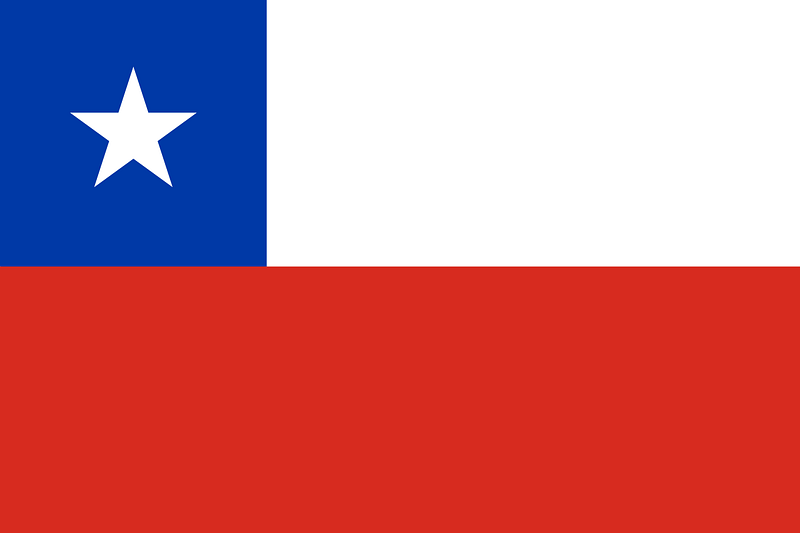This travel wiki page of Chile will help guide travelers with quick and relevant information to consider when planning and visiting the country. It is difficult to find all the relevant information you need on culture, safety, travel restrictions, and things to do, so we summarize it all here. If anything is stale or outdated, please reach out and let us know! Let’s dive in and explore more high-level information as a Chile trip planner.
Last updated January 10th of 2023.
Table of contents
National Information & Culture

Officially, the Republic of Chile in the western part of South America is the southernmost country in the world, closest to Antarctica. It occupies a long, narrow strip of land between the Andes and the Pacific Ocean, and shares land borders with Peru, Bolivia, Argentina, and the Drake Passage. With its large geography, Chile also controls the Pacific islands of Juan Fernández, Isla Salas y Gomez, Desventuradas, and Easter Island in Oceania. The southernmost part of Chile is the Chilean Antarctic Territory, occupying a significant portion of Antarctica. Santiago is the country’s capital and largest city, and the official currency is the Chilean Peso (CLP).
Chile is a mestizo country of mixed European and indigenous cultural influences, with its tradition visible in several parts. Nearly 90% of Chileans are Roman Catholic, but freedom of religious expression exists here.
Chile is a developing country with a high-income economy due to its copper export. The country ranks 42nd on the Human Development Index and is among South America’s most economically and socially stable nations.
The Official Tourism Website of Chile has helpful information and tips to help every traveler plan their trip.
Interesting Facts
Chile is an astronomer’s paradise, and the best place for stargazing is in the Atacama Desert. Being the highest and driest desert produces less humidity in the air, offering clear visibility of the Milky Way. Moreover, it is where the world’s most powerful observatory for studying the universe, the internationally funded Atacama Large Millimeter Array (ALMA) project, was inaugurated. Moreover, the Association of Universities for Research in Astronomy (AURA) observatory in the Elqui Valley of northern Chile has been recognized and designated as the world’s first International Dark Sky Sanctuary.
The Extremely Large Telescope (ELT) construction has been ongoing since 2013 and is expected to finish by 2024. The massive building is built on a 3,000-meter-high mountain in the Atacama Desert. Inside is a massive telescope with a 39.3-meter-diameter (130-foot) segmented primary mirror and a 4.2 m (14 ft) diameter secondary, which is perfect for observing the skies
Furthermore, Chile is home to the oldest mummies in the world. The Chinchorro mummies in the Atacama Desert, found in 1917, dates back to 7,000 and 1,500 BCE, and the remains of the ancient Chinchorro people. At least 100 mummies are displayed at the San Miguel de Azapa Archaeological Museum, about 9 miles (15 kilometers) from Arica, Chile’s northernmost city. Visitors can also see 32 mummies at the Museo de Sitio Colón 10 in Arica.
Special Travel Considerations

Covid-19 Protocol
Travelers arriving in Chile need to present either a certificate of Covid-19 vaccination or a negative PCR test result within 48 hours from departure to allow entry. Meanwhile, those below 18 years old do not have any requirements to enter Chile. In addition, all travelers may be subject to Covid-19 testing between the first and fifth day of arrival. Those who refuse testing or have positive results shall conduct a mandatory five days quarantine. However, the Covid-19 protocol of Chile may vary over time. Hence, it is best to check the latest Covid-19 policy when planning a trip to Chile and its territories.
2023 Pan American Games
The 2023 Pan American Games and Parapan American Games will take place in Santiago City, Chile, on October 20 to November 5, 2023. Officially, the XIX Pan American Games (also known as Santiago 2023) is a continental multisport event in the Americas featuring summer sports with 41 participating nations. The competition is held every four years in the year before the Summer Olympic Games.
Hence, Santiago City and Chile travelers should consider planning and booking ahead during this period.
Visa Information
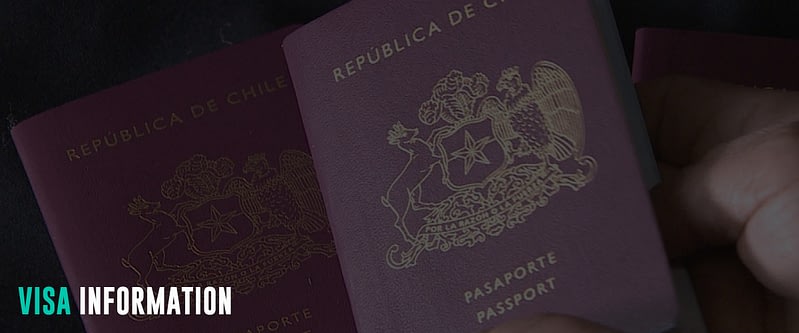
Travelers to Chile must present at least a 6-month valid passport and a visa relative to the country of origin. Citizens of 92 countries and jurisdictions are visa-free to Chile for a maximum stay of 90 days. However, some countries must pay in cash a reciprocity tax upon arrival at the airport in Chile. Australian nationals need an E-Visa. Check the list of which countries require a visa to enter Chile here. Those requiring a visa must check the process from the nearest Chile Embassy or diplomatic missions.
Upon entering Chile, all tourists will receive a Tourist Card (Tarjeta de Turismo), which they should keep and return during departure. The tourist card allows visitors a 19% tax exemption from hotels upon presentation with the passport during check-in. Tourists who lose the tourist card can request a free copy at the website of the Policía de Investigaciones de Chile (PDI) or the nearest PDI office. In addition, it is possible to do it at Santiago airport, although visitors should allot at least 45 minutes extra to deal with this.
Popular Attractions
Chile offers diverse tourist attractions, from the desert areas of the Atacama, mountain ranges and glaciers of the Andes, and Easter Islands of the Pacific Ocean to the southernmost Patagonia and Magallanes regions.
Torres del Paine National Park
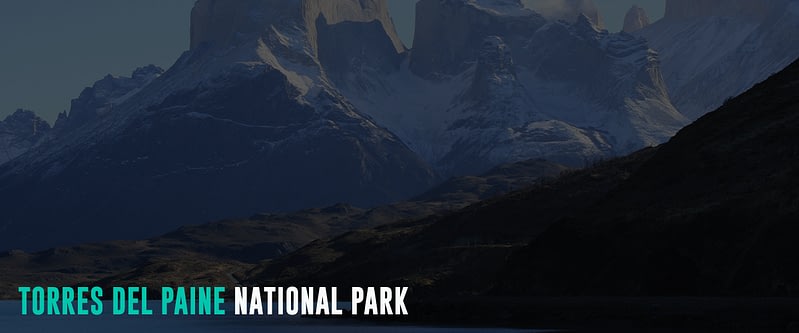
Torres del Paine National Park in southern Patagonia encompasses mountains, glaciers, lakes, rivers, and waterfalls. The three towering granite peaks (Torres d’Agostini, Torres Central, and Torres Monzino) of the Paine Massif are the most notable of its many beautiful features. It is the park’s centerpiece, dominating the scenery, with the highest peak of about 2,500 meters (8200 feet).
The park serves as a world biosphere reserve. It has a massive variety of flora and fauna in a stunning setting, making it an almost unequaled destination for hikers, backpackers, ecology lovers, and adventure buddies. Some wildlife travelers will find guanacos, foxes, pumas, and the endangered Chilean Huemul in the park. Visitors will also see various birds such as the Andean condor, black-chested buzzard-eagle, rufous-tailed hawk, Magellanic horned owl, Chilean flamingo, Darwin’s rhea, Magellanic woodpecker, and Magellan goose.
One of the most popular activities in the park is hiking along its numerous well-marked trails, either a day hike or a multi-day. But note that some areas and trails need a mandatory professional guide during the trek.
Valle de la Luna & the Atacama Desert
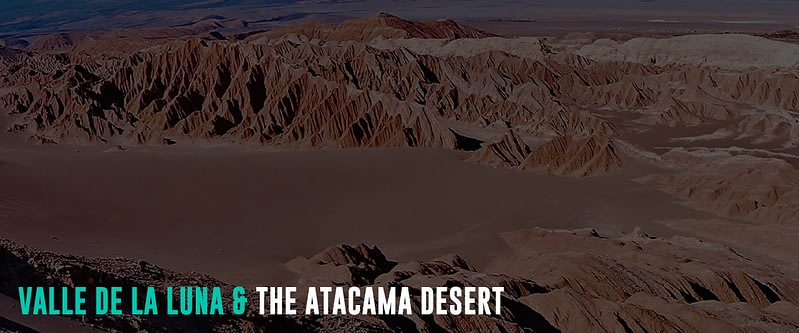
Valle de la Luna, or Valley of the Moon, lies eight miles west of San Pedro de Atacama at the north end of the country, near the Bolivian border. Its breathtaking desert landscape of dunes and stone formations in the heart of the Atacama Desert resembles the moon’s surface, resulting from centuries of winds and floods on the sand and stone of the region. Hence, its name is ‘Valley of the Moon.’
The Atacama Desert is the driest place on Earth. Consequently, its most attractive features are its dry lake beds, dazzlingly white due to salt deposits, and prone to produce fascinating natural saline outcrops. Other exciting features of the Atacama Desert are the many caverns in the region. Some contain evidence of pictographs by early man and where some of the world’s oldest mummies, preserved by the area’s aridity, were found. The most popular of these, the Chinchorro mummies, are now on display at the San Miguel de Azapa archaeological museum.
Easter Island & Rapa Nui National Park
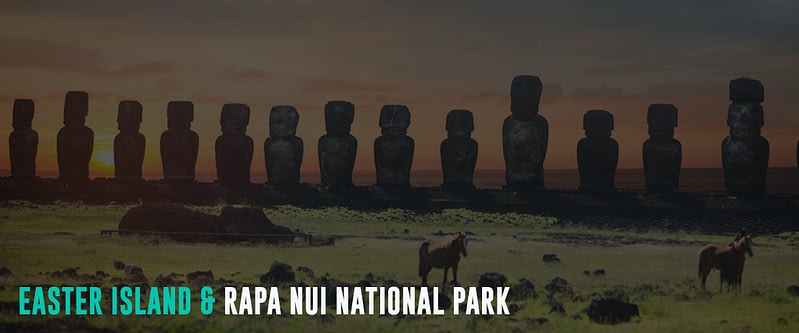
Easter Island is a UNESCO World Heritage Site and one of the most isolated islands in the southeastern Pacific Ocean. Despite being thousands of miles from mainland Chile, this remarkable island with 887 stone sculptures remains the country’s most recognizable attraction.
All 887 statues, known as Moai, made from hard volcanic tuff, were created by the island’s early Rapa Nui inhabitants and are now protected by Rapa Nui National Park. The most impressive collection is at Ahu Tongariki, where 15 have been re-erected on the island’s largest Moai platform, or “ahu.”
Rapa Nui is also home to one of Chile’s best beaches, Anakena. Its beautiful yet short stretch of white coral sand is an ideal spot for a break from hiking. Also of interest are the many “hare paenga” ruins near ahu sites dating from the 10th to 16th century, consisting of stones that once formed the foundation of boat-shaped houses. Other highlights include the Father Sebastian Englert Anthropological Museum in Hanga Roa, the island’s central community. The museum is notable for its exhibits relating to the Polynesian islanders’ history and traditions. Easter Island also offers excellent diving, surfing, and volcanic craters.
Santiago

Santiago, Chile’s financial and business capital, also serves as the country’s cultural and entertainment center. Its strategic location also makes Santiago the country’s central transportation hub and tourist destination.
The city features various attractions and points of interest, such as Centro Cultural Palacio La Moneda, a state-of-the-art cultural center dating back to 1541. Visitors will also find various museums and galleries here, especially the 1880s Chilean National Museum of Fine Arts (Museo Nacional de Ballas Artes). The museum focuses on Chilean artists and boasts an extensive permanent collection of paintings, sculptures, and photos. Another must-see destination is the Museum of Pre-Columbian Art (Museo Chileno de Arte Precolombino), featuring collections about native people. Finally, the Museum of Memory and Human Rights (Museo de la Memoria y Los Derechos Humanos) commemorates those who suffered under the Pinochet regime and is worth visiting.
Despite being highly urbanized, the city still has a vast urban green space at the Santiago Metropolitan Park (Parque Metropolitano de Santiago). In addition, it has a botanical garden, the Chilean National Zoo, and a funicular railway.
Valparaiso
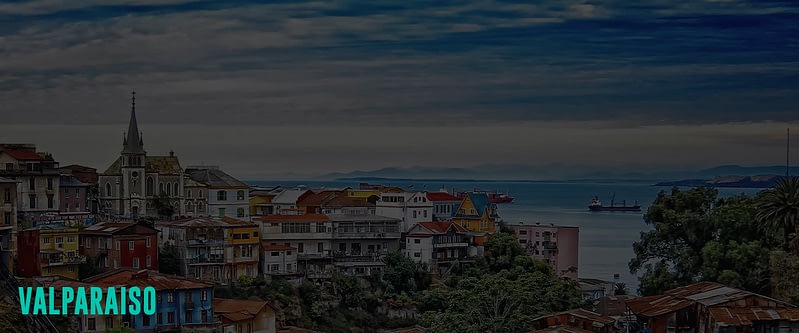
Valparaiso is the third-largest city in Chile. Its strategic location between the sea and the coastal mountain range, about 112 kilometers northwest of Santiago, makes for an excellent day trip. The city offers plenty of things to do, from its famous old cobbled streets and unique architecture to its lovely harbor and beaches.
Its many tourist attractions focus on the country’s rich maritime heritage, including Lord Cochrane’s Museum (Museo Lord Cochrane), located in a colonial home built in 1842. Another must-visit tourist attraction is the Naval and Maritime Museum (Museo Naval Y Maritimo), displaying Chile’s heroes’ memorabilia of the War of the Pacific of 1879 between Chile and allied Peru and Bolivia.
Lauca National Park
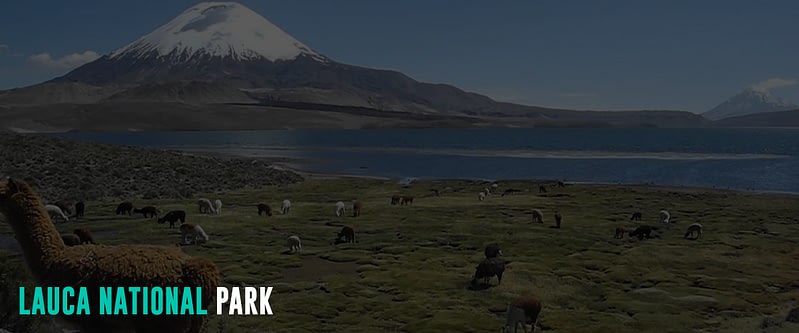
Lauca National Park lies far north of Chile, in the Andean range. Its area consists mainly of high plains and mountain ranges, with many large volcanoes. One of the main attractions is the small lacustrine area out of the Cotacotani and Chungara lakes. The park is also home to more than 140 species of birds, such as Andean geese, crested ducks, Chilean flamingos, and the massive Andean condor. Hence, making Lauca National Park a popular destination for bird watchers.
The park also features several important archaeological sites and evidence of the early European settlers who left their mark in the region’s many fine old colonial churches and buildings.
Pumalin Park
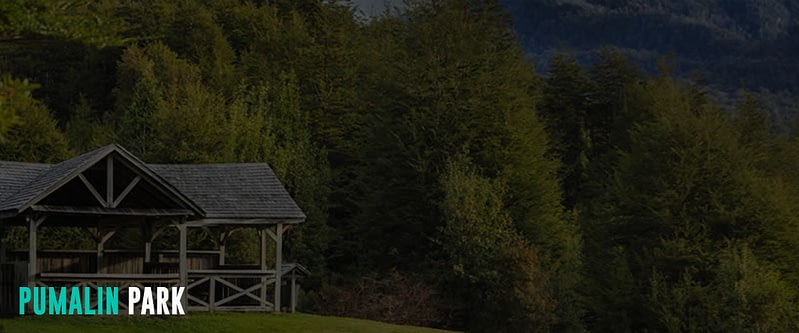
Pumalin Park was established as a nature sanctuary in 2005 and has become one of the most-visited tourist attractions in Chile. Although it covers more than 988,000 acres from the Andes to the Pacific, the land is almost untouched by humans. As a result, visitors and nature lovers will see rare tree types here, such as Alerce, one of the world’s oldest tree species.
The presence of an extensive network of trails, campgrounds, and visitor facilities makes it an ideal place for a short nature hike or as part of a more extended ecotourism adventure. It often includes a rustic cabin-style accommodation overlooking one of the world’s most beautiful, unspoiled backdrops. The park is owned and operated by the US-based Conservation Land Trust.
Los Pingüinos Natural Monument
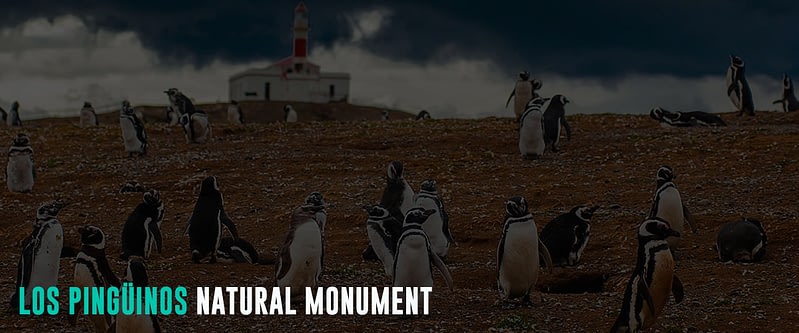
Aside from the national parks, Chile’s essential conservation efforts are visible in its many natural monuments. One of the best examples is the famous Los Pingüinos Natural Monument (Monumento Natural Los Pingüinos), only 35 kilometers from Punta Arenas, in the southern part of the island. As the name suggests, the monument is home to the largest colonies of more than 60,000 Magellanic penguins. In addition, the islands are also home to seal and sea lion colonies. Tourists must join guided tours to visit and explore the area.
Chiloé Island & Chiloé National Park
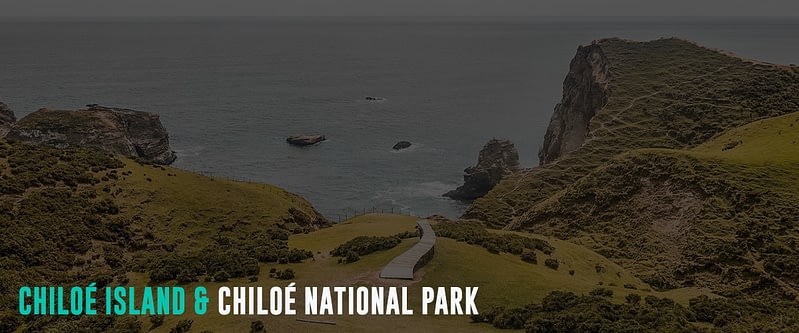
Chiloé Island, the country’s second-largest island, and Chiloé National Park are worth adding to a tourist’s travel itinerary. The attractive and colorful homes along the shorelines are called ‘palafitos,’ and the many iconic wooden churches symbolize the town. These churches are courtesy of the Jesuit missionaries’ communities that settled on the islands in the 1600s.
Another increasingly popular tourist attraction on the island is Chiloe National Park. It highlights nature and allows one to observe diverse wildlife such as dolphins, whales, and extensive breeding grounds of penguins at the nearby Islotes de Puñihuil Natural Monument. Adventure activities include sea kayaking, hiking, and ecotourism.
Mylodon Cave Natural Monument

Mylodon Cave Natural Monument (El Monumento Natural Cueva del Milodón) in the heart of the Patagonia area is another popular tourist attraction in Chile. In 1895, extensive archaeological excavations discovered well-preserved Mylodon caves and ancient human and animal bone remains. The cave is 200 meters deep, with trails to explore leading to the top, where visitors can enjoy spectacular views of the nearby Eberhard fjord. In addition to the caves, another highlight is a formidable rock formation known as the Devil’s Chair (Silla del Diablo). Mylodon Cave Natural Monument is part of the famous End of the World Route.
Primary Spoken Language(s)
Spanish is the official language in Chile, although their accents vary from north to south, and those living in the city and the countryside. Aside from Spanish, there are several indigenous and minority languages in Chile. It includes Mapudungun, Aymara, Rapa Nui, Chilean Sign Language, Qawasqar, and Yaghan. Most of the Chilean population also speaks German, Italian, English, Greek, and Quechua.
English is mandatory for public school students from fifth grade onwards, while most private schools start teaching English from kindergarten. Hence, the language barrier is not a problem when traveling to Chile.
Safety Concerns
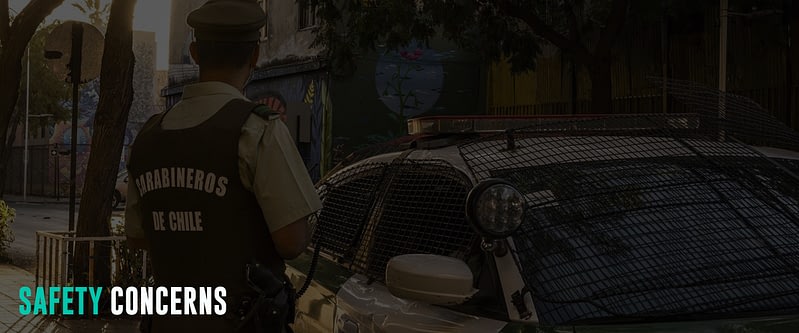
Generally, Chile is a safe country. It ranks 55 out of 163 countries on the Global Peace Index 2022 produced by the Institute for Economics and Peace. Also, Chile has Alert Level No. 2 from the US Department of State as of October 4, 2022.
Chile has high-security levels and no significant problems with drug cartels, kidnapping, and terrorist attacks. However, some places around Santiago have safety problems, especially outside the city.
The main tourist concern is pick-pocketing. Hence, everyone must always be careful with their purse and bags, especially in crowds, public transportation, and public places. Keep bags in front of your body, and don’t allow thieves to distract you with the old tactics of accidental bumping or spilling liquid. Leave jewelry, valuables, and much money safely at home or the hotel. Keep cell phones hidden while walking, and use them only when necessary.
Avoid walking alone in Cerro San Cristóbal and Santa Lucía hills in Santiago at night. The same goes for the hills of Valparaíso and some parts of the downtown.
Beware of scams asking for donations on social, political, or ecological campaigns, especially around Cerro Santa Lucía and Parque Forestal in Santiago. Know how to decline from their psychological pressure and valid argument.
Be careful with illegal taxi drivers and operators. Instead, choose rides with authorized and registered taxis and transportation.
In an emergency, please call toll-free numbers: 131 – ambulance, 132 – fire department, 133 – police, 136 – Andes Help Corp., and 137 – maritime rescue.
Natural Calamities
Chile belongs to the Pacific Ring of Fire. Hence, the country is prone to seismic activity, including earthquakes and volcanic eruptions. Chile has about 500 active volcanoes, 60 of which have recorded eruptions in the last 450 years. The largest earthquake ever recorded at magnitude 9.5 also happened off the coast of southern Chile on May 22, 1960. As it is nature, travelers must know the dos and don’ts when things like these happen.
Budget Considerations

Chile is a budget-friendly destination in South America.
Travelers can get a bed in a dorm for as low as $16 and a private hostel room for $30. Free Wi-Fi and breakfast are standard, and most hostels have kitchen facilities. An average three-star hotel starts at $50, and expect to pay around $100 for international hotel chains. Airbnb is also available in big cities, with a private home or apartment starting at $30 per night.
Chilean cuisine relies heavily on seafood. Thanks to its extensive coastline, visitors can eat fresh seafood such as cod, salmon, shrimp, lobster, and prawns. As a whole, the foods in Chile are not that expensive. However, it gets higher further in the south due to transportation costs.
A fast food combo meal is around $6, while most local restaurants offer set meals for as low as $7, including a starter, main dish, and a drink. Meanwhile, dining in an excellent restaurant costs around $40. Budget travelers can also save a bunch if they cook their food. On average, expect to pay $30 for a week’s grocery budget. It can include basic staples like pasta, rice, quinoa, vegetables, eggs, and meat.
Moving around Chile by public transportation is affordable. Ferry rides start at $0.70, while intercity bus and train fares start at $0.74. On the other hand, car rental is available for as low as $29 per day.
Another thing that takes a portion of a traveler’s budget is the cost of activities. Although some are free, entrance to National Parks and museums in Chile varies between $5-25. For example, the world-famous Torres del Paine National Park collects around $25 for foreigners during the high season and $13 in the low season.
Average Two-Week Budget
A backpacker must allocate around $45 daily and $630 for two weeks. It means staying in a hostel dorm bed, cooking most of the meals, taking public transportation, and doing primarily free activities.
On the other hand, a mid-range traveler’s average daily expense is about $95. The two-week budget of $1330 can let a traveler stay in an average hotel, dine in local restaurants, take an occasional taxi, and do paid tours.
The budget does not stop there. With the availability of luxury accommodations and various tours in Chile, the sky is the limit for visitors looking for a grandeur experience!
Customs And Import Restrictions
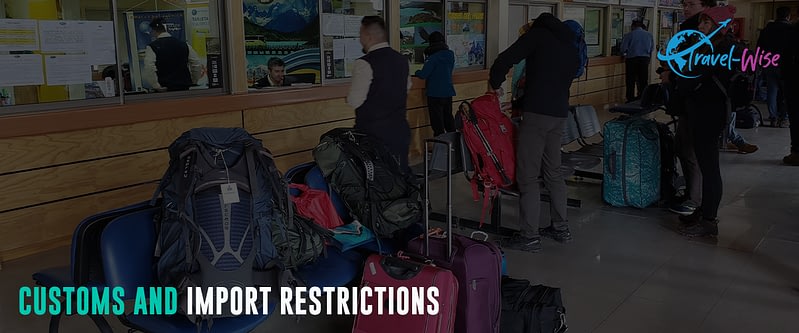
Upon entering Chile, travelers need to fill out the SAG Customs Declaration. All arriving passengers can bring their personal goods, cash not more than $10,000 or its equivalent, and buy Duty-Free items for less than $500. Passengers over 14 years old can also bring tax-free gifts of not more than $300. Moreover, those 18 years and over can carry 400 cigarettes, 500 grams of pipe tobacco, 50 cigars, and 2.5 liters of alcoholic beverages.
On the other hand, the Chile Aduanas Customs bans or restricts entry of some goods, while others require prior approval. It includes:
- Firearms, ammunition, explosives and chemicals, inflammable and asphyxiant substances, and martial arts implements.
- Fertilizers and pesticides.
- Pharmaceutical or food products for medical or cosmetic use.
- Narcotic drugs and psychotropic substances cause dependence.
- Toxic or health-hazardous substances.
- Foods and animal by-products.
- Species of wild fauna and flora per the CITES Convention.
Check the Chile Aduanas Customs portal for the country’s complete customs and import restrictions list.
Climate Considerations
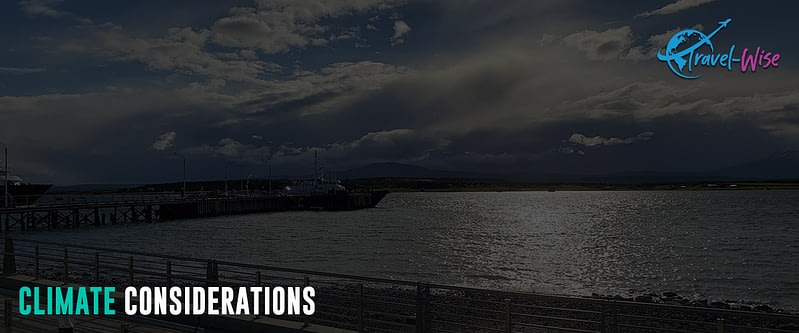
Chile is a long country with different regions having diverse climates. It ranges from the world’s driest desert in the north (Atacama Desert), Mediterranean climate in the center, humid subtropical in Easter Island, to an oceanic climate, including alpine tundra and glaciers in the east and south. According to the Köppen system, the borders of Chile host at least seven major climatic subtypes.
There are four seasons in most of the country. Summer from December to February has high temperatures, warm weather, and no precipitation. Autumn starts from March to May, and spring from September to November. On the other hand, winter is from June to August, bringing fluctuating temperatures from below-freezing to 15 °C.
In the capital city of Santiago, average temperatures range from 27 °C in January, and 13 °C in July. In the central regions, average temperatures are 28 °C in January and 14 °C in July. Expect temperatures ranging from 13 °C in winter to 16 °C during summer in the south. It gets colder further south, especially in Patagonia or Antarctica.
On average, May to August is a rainy season in Chile.
Primary Transportation Options

There are various means of getting around Chile. Depending on the destinations and distance, travelers can explore Chile by air, ferry, train, bus, and other land transportation options.
Air
Arturo Merino Benítez International Airport (SCL) is Chile’s primary entry point for international flights and passenger arrivals. Latam Airlines is the country’s flag carrier and the largest airline holding company in Latin America, with headquarters in Santiago City. The presence of more than 44 airports and various airline companies makes traveling in Chile easier for the public.
Ferry and Cruise
There are regions and destinations in Chile that are best reached by ferry, such as the Patagonia region. For example, many of the glaciers of the Patagonian ice field or the Darwin cordillera on Tierra del Fuego are reachable only by ship. Car ferries also connect the Carretera Austral to the Island of Chiloé. Fares vary from $0.70 per person to $25 per car for 35 minutes and 2 hours and 20 minutes ferry ride, respectively.
It is also possible for visitors to arrive through the main Chilean ports, especially Valparaiso. It is where cruise ships dock with travelers from all over the world.
Land
There are around 50 entry points by land to Chile. For example, travelers from Peru can enter Chile through Arica; Bolivia through Arica, Iquique, and Antofagasta; and Argentina through La Serena, Santiago, Osorno, and others.
The main highways of Route 5 Pan-American Highway, Austral Highway, Road 5 South, and Route 68, among others, make land transportation fast and easy.
Buses
Chile is the longest country in the world, but it is possible to access all its attractions at affordable prices through a complete network of highways and bus lines. Hence, buses are the primary means of long-distance transportation in Chile.
Many bus companies transport passengers in Chile, but the most popular are Tur Bus and Tas Choapa. They all feature comfortable seats and travel safety, offering multiple schedules for travelers. Electronic ticket reservation is possible through their portals and various apps. Note that bus companies are not responsible for misplaced or lost baggage, so passengers should pay extra attention.
Within Santiago, travelers can use the Transantiago bus system to move around the city. The Red Metropolitana de Movilidad App comes in handy to plan transfers in the bus, subway, and MetroTren.
Car Rental
Travelers who want more flexibility and private trips can rent a car in Chile, with or without a driver. Options include local and international rental agencies. The daily rental rate depends on the number of days and the type and size of the car. For example, visitors can rent a small car for as low as $29 per day for seven days.
Through Chile’s main highway, the Panamericana or Route 5, it is easy for travelers to get to all the country’s attractions and see some tourist services like restaurants, emergency phones, and gas stations.
Driving in Chile is on the right-hand side of the road and is allowed for 18 years and older.
Taxi
Taxis are ideal for traveling short distances in Chile. First, check that the taxi meter is working and within sight. For longer distances, it is best to negotiate a fixed price with the driver first before hopping in the cab.
Santiago has a base price of $0.35 (300 CLP), with an increment of around $0.15 (130 CLP) for every 200 meters distance or per minute while waiting. The rates can go double in the evening/nighttime.
Trains
Except for a few dedicated industrial lines, railways in Chile are operated by the state-owned company Empresa de Los Ferrocarriles del Estado (EFE). As a result, visitors can travel from Santiago to Chillán in modern and comfortable trains.
Terra Sur Company offers different trips to enjoy the country’s southern part. Visit Empresa de Los Ferrocarriles del Estado (EFE) portal for the train timetable and fares.
Metro
A modern and safe rapid transportation system called the Metro covers most of the city of Santiago. The Santiago Metro offers affordable tickets and a comfortable service that helps travelers go through the city fast. It has nine lines running along the municipalities of Renca, Cerro Navia, Quinta Normal, Santiago, Providencia, Las Condes, and Vitacura. Passengers can use the subway from 6:00 to 23:00 Monday to Friday, 6:30 to 23:00 on Saturday, and 8:00 to 23:00 during Sundays and holidays.
Metro Buses, MetroTren, and Provincial Buses have interconnections with Metro. The ‘Clon Metro’ white buses also cover the same area as the different lines on the surface. Fares start at $0.74 (640 CLP), depending on the season, distance, and traveler type.
To ride on any bus in Santiago and the subway, travelers must buy a Bip! Card for payment. It is reloadable with money at different places in the city and every subway station. On the surface, travelers can connect between the subway and buses, and the card will only charge one trip if the connection is made within the hour.
Start Trip Planning
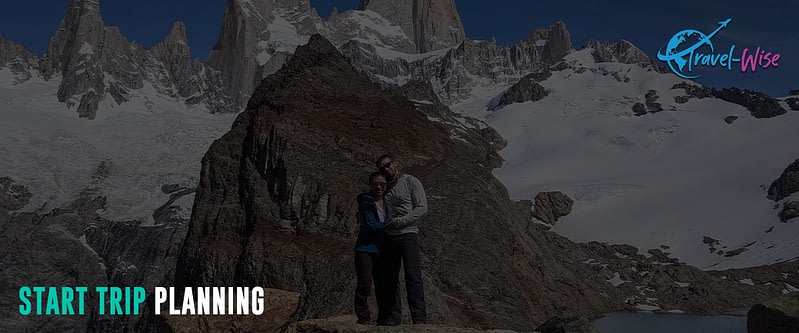
Travel-Wise is made from the ground up to help people travel more, break down the barriers that make it tough to get going, and start your journey as painlessly as possible. Bookmark our other Country Guides to help kick-start your research for future travels. We also offer templated itineraries from our staff and community that help serve as a building block for your trip plans. Alternatively, we also utilize AI to offer a way to generate itinerary ideas. This saves much time just getting you up and running with a template. From there, you can use the trip planner to create your customized itinerary, invite friends and family for collaboration, find others from Travel-Wise to join the trip, book and track important information, journal, and share your experiences at the end or along the way!

